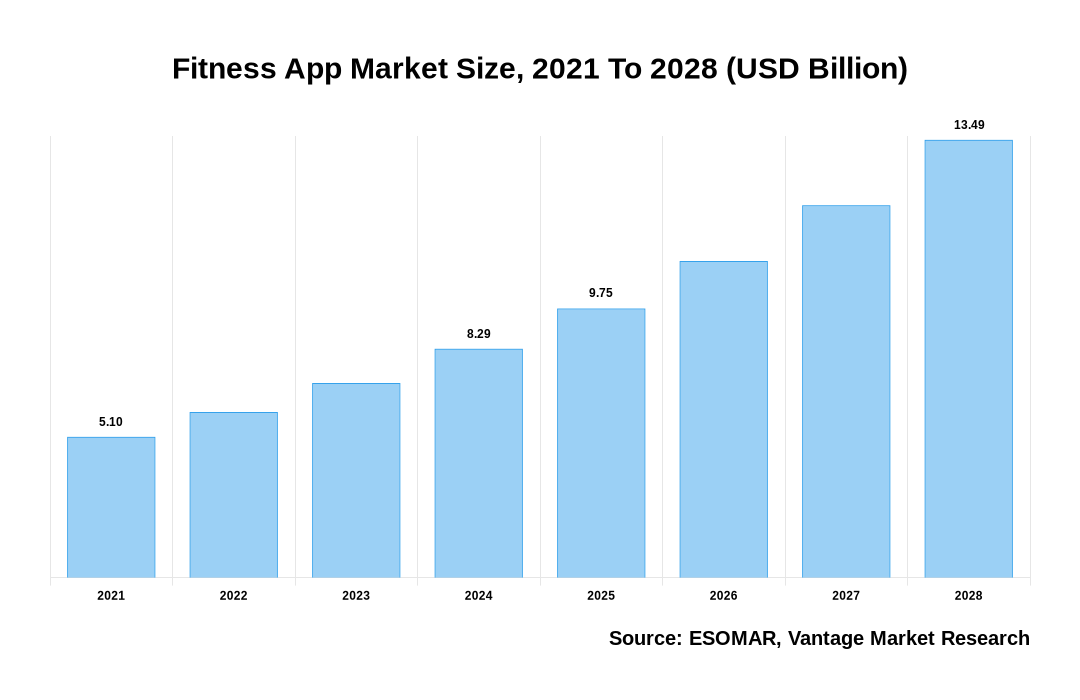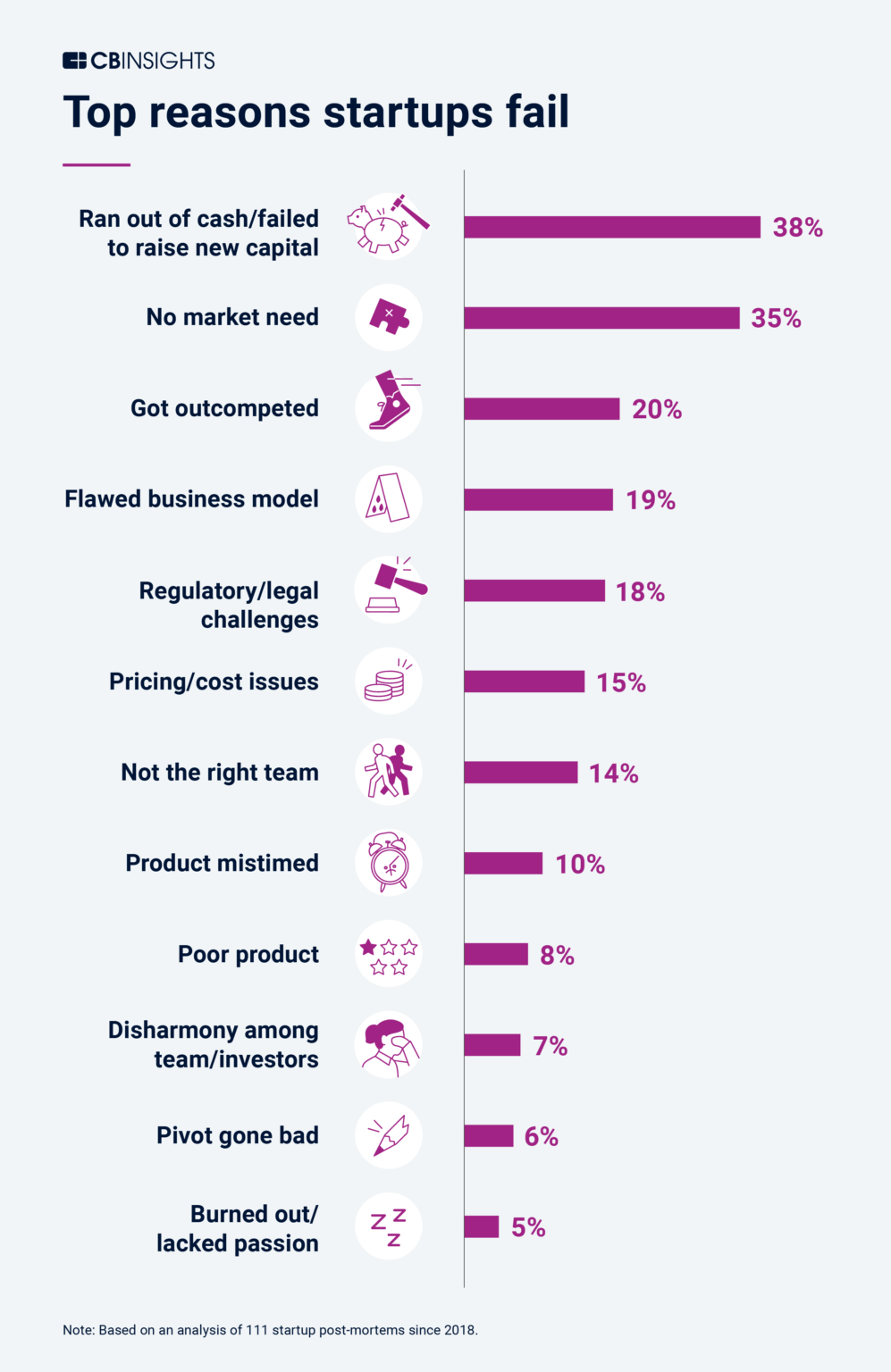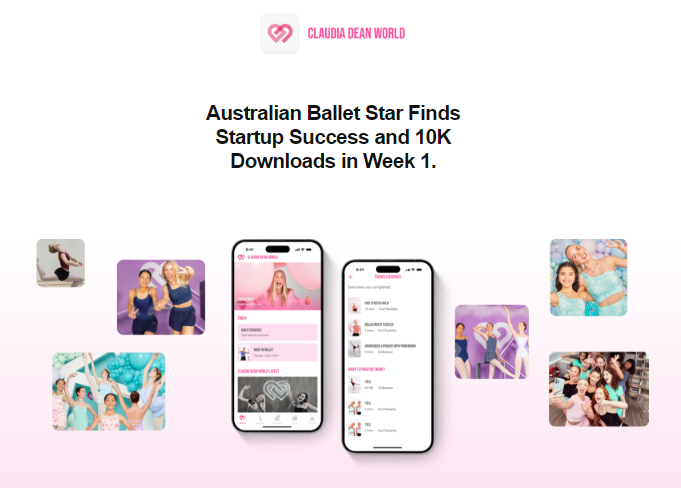Fitness App Development: 6 Crucial Steps for Building a User-Centric Product

If there were two industries that saw tremendous growth amid the recent global health crisis, it would be the field of health and technology.
Primarily due to lockdowns, the global fitness app market recorded 54% growth and was valued at USD 5.1 billion in 2021.

Source: Vantage Market Research
But if you thought the momentum would die down once the market reopens, think again.
The fitness market is expected to continue to grow.
According to a study by Market Growth Reports, the fitness application market is projected to reach USD 18.374 billion by 2028, expanding at a compound annual growth rate (CAGR) of 30.63% during the forecast period.
So, if you’re considering developing your fitness app, now is the ideal time to do a crunch.
In this article, I’ll discuss the major steps to making a fitness app that users would love to use and flex.
But before we get into that, let’s look at some popular types of fitness apps.
Fitness app types
Here are some of the types of apps you can consider if you’re looking for a fitness app idea:
- Workout apps
- Health and fitness apps
- Diet and nutrition apps
- Yoga and meditation apps
- Activity tracking apps
- Calorie counter apps
- Personal trainer apps
- Fitness trackers
How to Create a Fitness App That Users Would Love to Use and Flex
1. Validate your idea
A study by CB Insights found that the lack of product-market fit is among the top reasons why startups fail.

Source: CB Insights
We get it. As visionaries, it’s easy to fall in love with our innovations that we forget to ask if there’s even a market for them.
But there’s no point in creating a fitness app that no one would use. As such, among the first things that you should ask when you make a fitness app or any product, for that matter, is, “What problem or pain point does my idea solve?”
It doesn’t have to be a wide-scale and heavily funded market research. You can start with your circle, perhaps the people from your local gym, and ask them about a fitness-related problem they are experiencing and how they are currently dealing with it. Then, use their answers to design an app that solves the problem.
As early as this point of your journey, you should also be thinking about your potential funding and monetization strategy. App development requires significant financial investment, and as you can see from the data above, the number one reason why startups fail is due to a lack of financial resources.
So, even if you intend to develop a free fitness app, there should be room to incorporate monetization into your business model.
Check out our article on the free app monetization model to gain valuable tips and insights on how you can gain revenue for your fitness, nutrition, or health app.
2. Conduct market research
As you saw from the data above, fitness application development is a ripe field. Many players worldwide want to have a fair share of the action. It’s survival of the fittest.
To thrive in the competitive industry, you must find ways to set your product apart or deliver the difference. And the only way you can do that is if you know what’s already out there.
To be clear, I’m not saying you should shun away from developing a fitness app with the same features as your competitors. It’s perfectly okay. In fact, we often tell our clients that having competitors is a great indicator that the market is already validated.
However, you need to identify your unique selling proposition (USP). How would you position your product against competitors? Is it cheaper? Does it offer a premium user experience or the most innovative tech? In other words, why would people choose your solution?
This will allow you to gauge if there’s even a market for your app idea.
Of course, gaining perspective and insights from the experts is always even better, like what Australian Ballet Star, Claudia Dean, did when she tapped our team at Appetiser to build her ballet training app.

The former Royal Ballet dancer — and among the few who ever achieved the honor of graduating in the Royal Ballet Company — came to us with a vision for an app that would reflect her status in the world of dance and help others train to get the skills they need.
We worked hard to understand Claudia’s ideals and what sets her apart. Our effort paid off and resulted in the successful launch of Claudia Dean World — a ballet training app that saw 10,000 downloads and a 4.9 rating in the first week!

You’ll find many similar stories of app success when you browse our portfolio.
3. Figure out the most essential features of your health or fitness app
“As designers, we always aim for our clients to get an MVP. Setting at the beginning of each project achievable key objectives and focusing on the hypothesis the client wants to prove to help us to decide the features we should include.” — Lukas Hernandez, Product Designer, Appetiser Apps
When it comes to development, focusing on the most basic features of your health or fitness app is crucial. Taking time to identify and prioritize which fitness app features are most needed will likely result in an app that better drives user engagement and experience.
Before you dive into extensive app development, it is important to consider what a minimum viable product (MVP) means for your app offering. An MVP should include enough features that would allow your target audience to start interacting meaningfully with your app.
By focusing on the essential elements first, you can increase your speed to market and save a lot of resources in the process. Your app can then be scaled up with added functionalities once you understand how users interact with it.
But how do you know which features and functionalities are necessary for an MVP fitness app?
In our experience consulting for potential partners, it can help to ask yourself questions such as:
- What will this feature enable users to do?
- Is this feature crucial or desirable?
- If I don’t prioritize this feature, will my app still deliver its core functionality?
Additionally, there is no harm in doing a bit of research and consulting industry experts for their opinion on app development and the minimum viable product.
At Appetiser, our designers and product strategists workshop with our clients during the ideation phase to help them prioritize and keep things as lean as possible.
This was how we’d empowered numerous partners to launch apps typically in under 4.5 months — significantly faster than our competitors — and keep their investments low.
In our experience, most basic fitness apps — the likes of a calorie counter and activity tracker — can start and launch a lean MVP with the following features:
- Signup and login
- Profile
- Third-party device integration
- Activity monitoring
- Notifications
Of course, if your fitness app’s USP involves premium features, such as personalized coaching services, you might also require more complex features, such as video content hosting and streaming.
4. Design your fitness app
Developing a fitness application can be a time-consuming and costly endeavor. You don’t want to waste even a second or penny on a feature that will only prove unnecessary.
Starting with an organized design helps you focus energy and resources in the right places and ensure satisfactory results. An effective design serves as the foundation for product usability, user experience, and, ultimately, market success.
When designing a fitness app, sketching and wireframing are two essential components of our process.
Sketching
Sketching allows us to ideate effectively, sketch different designs, and take the guesswork out of design decisions. It also enables us to scope your project and provide you with a ballpark development cost and estimated time frames.
🚨 Take note that your fitness app development cost depends highly on the size, requirements, and complexity of your app’s features. Therefore, giving an exact amount during the planning stage is virtually impossible.
In our experience, your needs and preferences almost always change once your concept starts taking a tangible shape. It’s important to sketch out your idea as much as possible to get a better sense of how you want the user experience to be. At the end of this process, you should be able to envision your fitness app’s general look and feel along with the main sections.
Wireframing
On the other hand, wireframing allows for testing out different features and functions for optimal performance and gives our developers a good starting point for developing the app’s actual functionality.
Our designers create different flows and start thinking about secondary sections, flows, and screens. At this point, our designers deliver a first approach to an interactive prototype where you can visualize each flow and get a good idea of what we will deliver at the end of the design stage.
Both sketching and wireframing help designers create an effective fitness app that puts users’ needs first.
5. Develop your fitness app
Once you have a clearer grasp of the key features that must be included in your MVP fitness app, the next challenge is to decide which feature to develop first.
At Appetiser, we follow the Kanban approach. It is an agile project management technique used to define what gets done, when it gets done, and how much work needs to be completed for the product.

Source: Kanbanize
In an agile environment, a team of product and project managers, coders, programmers, and quality analysts must come together to develop features in short cycles, integrate your feedback, and repeat the process for another feature.
Allow me to break down our process further:
- After you’ve approved the final design prototype and decided to pursue development with us, our business analyst will prepare a roadmap based on the scope of your project. It contains your:
- Platform and team structure
- MVP features and backlog items
- Timeline and target launch month
- Monetization strategy, if there is
- Our team will work through as much backlog as possible every month, prioritizing the most important features we’ve identified together. You have the liberty to adjust priorities as you want and to give you full control of the project and your budget.
- As we progress, we conduct quality assurance checks to ensure that the features meet our standard for product quality. Test cases, or positive and negative scenario testing, are key components of our QA process.
- You’ll receive a weekly report showing the live progress of your fitness app.
- Even while development is ongoing, you can start using and testing your app’s features to give us feedback.
One of our product managers suggests finding a small group who will be your first users. For example, you could focus on one city or community (like a local football league or members of your local yoga studio or gym).
“Invite them to have free early access to your app. A lot of people are excited to be the first to use a new product, and will happily test, give feedback, and even provide testimonials in exchange for an exclusive experience.” — Tovah Otton, Product Manager, Appetiser Apps
With these agile techniques, fitness app developers can create efficient applications that users want to use over time. It’s the perfect combination — agile tools meet creative problem-solving — to ensure you get the most out of developing a fitness app.
6. Launch and market your fitness and wellness app
To boost your fitness app’s success, you must learn how to optimize effectively for the app stores.
App Store Optimization (ASO) is essential to help to increase the visibility of your fitness and wellness app so that potential users are more likely to find it among all the other fitness apps out there.
ASO involves crafting a keyword-rich description and title for your app store page and designing visually appealing app icon, images, and videos to draw in potential users. This can help elevate your fitness and wellness app above similar apps in the Apple App Store or Google Play Store.
Additionally, pre-launch and post-launch marketing are critical components of any fitness app launch. Even successful fitness app companies often find their hard work only pays off if they have established effective marketing strategies.
Pre-launch marketing is about building anticipation among your target audience. This may range from email campaigns, social media advertising, and even broadcasting in fitness-related communities.
Post-launch marketing is equally important, with tasks ranging from content creation and paid acquisitions to tapping influencers who have engaged fitness audiences. This is essential to further engage and retain existing users and attract new ones.
Ultimately, pursuing successful marketing techniques before and after a fitness app launch can help set brands up for long-term success.
Pro tip: No matter the specific strategy you choose, ensure it’s tailored to your branding and target audience.
For more strategic insights, check out this Pre-Launch and Post-Launch App Marketing Guide written by one of our founders.
Keep moving and growing
Like any personal fitness and health goal, consistency is the key to success in your health, wellness, and fitness app development journey.
You shouldn’t stop working out once you’ve built muscles or shed weight. Instead, you must stay committed and consistent with your workout routines to maintain strength and momentum.
The same principle applies to web or mobile app development. Building and launching your product is just the beginning of the long-term journey of continuous improvement, iteration, and optimization.
This is why our development process doesn’t end once your product hits the app stores at Appetiser. We offer growth planning solutions and optional support and maintenance services (retainer) to boost your success and keep your momentum.
So, if you’re looking for a full-journey partner to help you build your own workout app, exercise app, or any other kind of health and fitness app — and turn it into a successful brand, hit us up today!



